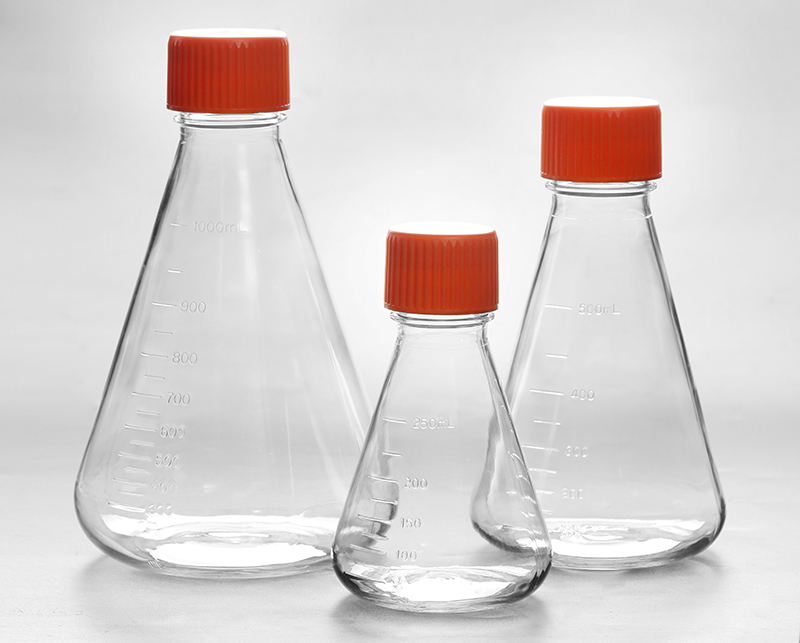Multifaceted Roles of Chemokines and Chemokine Receptors in Tumor Immunity
趋化因子和趋化因子受体在肿瘤免疫中的多方面作用
Various immune cells are involved in host immune responses to cancer. T-helper (Th) 1 cells, cytotoxic CD8+ T cells, and natural killer cells are the major effector cells in anti-tumor immunity, whereas cells such as regulatory T cells and myeloid-derived suppressor cells are negatively involved in anti-tumor immunity. Th2 cells and Th17 cells have been shown to have both pro-tumor and anti-tumor activities. The migratory properties of various immune cells are essential for their function and critically regulated by the chemokine superfamily. In this review, we summarize the roles of various immune cells in tumor immunity and their migratory regulation by the chemokine superfamily. We also assess the therapeutic possibilities of targeting chemokines and chemokine receptors in cancer immunotherapy.
多种免疫细胞参与宿主对癌症的免疫反应。T-helper (Th) 1 细胞、细胞毒性 CD8 + T 细胞和自然杀伤细胞是抗肿瘤免疫的主要效应细胞,而调节性 T 细胞和髓源性抑制细胞等细胞与抗肿瘤负相关免疫。Th2 细胞和 Th17 细胞已被证明具有促肿瘤和抗肿瘤活性。各种免疫细胞的迁移特性对其功能至关重要,并受趋化因子超家族的严格调控。在这篇综述中,我们总结了各种免疫细胞在肿瘤免疫中的作用以及趋化因子超家族对它们的迁移调节。我们还评估了靶向趋化因子和趋化因子受体在癌症免疫治疗中的治疗可能性。

Tumor immunity is initiated by the recognition of tumor antigens by the immune system [1]. Antigen priming and effector cell differentiation are regulated by complex processes involving various cell populations, cytokines, and chemokines [1,2,3]. While CD4+ helper T cells are known to orchestrate immune responses, CD4+ T cells are heterogenous and composed of various functional subsets including T-helper (Th) 1 cells, Th2 cells, Th17 cells, and regulatory T (Treg) cells [4,5]. These T cell subsets are characterized by the secretion of signature cytokines and differentially involved in tumor immunity [4,5]. Furthermore, CD8+ cytotoxic lymphocytes (CTLs) and natural killer (NK) cells play direct roles in the elimination of tumor cells. Tumor tissues are also highly enriched with innate immune cells such as myeloid-derived suppressor cells (MDSCs), tumor-associated macrophages (TAMs), and tumor-associated neutrophils (TANs) [6,7]. These various immune cells are known to express characteristic chemokine receptors and are elaborately regulated in their migration and tissue localization by respective chemokine ligands [8,9,10]. Accordingly, some chemokines and their receptors may be involved in the elimination of tumor cells by recruiting anti-tumor effector cells, whereas others may promote tumor progression by attracting immunosuppressive cells. In addition, some chemokines and their receptors are known to play critical roles in the interactions of dendric cells (DCs) and T cells [11,12,13,14]. Thus, the chemokine superfamily has a multifaceted role in host tumor immunity. In this review, we overview the roles of various immune cells and the chemokine superfamily in host immune responses to tumor cells in order to assess the possibility of targeting chemokines and chemokine receptors for cancer immunotherapy.
肿瘤免疫是由免疫系统识别肿瘤抗原引发的[ 1 ]。抗原引发和效应细胞分化受到涉及各种细胞群、细胞因子和趋化因子的复杂过程的调节 [ 1 , 2 , 3 ]。虽然已知CD4 +辅助 T 细胞协调免疫反应,但 CD4 + T 细胞是异质的,由各种功能亚群组成,包括 T 辅助 (Th) 1 细胞、Th2 细胞、Th17 细胞和调节性 T (Treg) 细胞 [ 4 , 5 ]。这些 T 细胞亚群的特点是分泌特征性细胞因子,并与肿瘤免疫有差异 [ 4 ,5 ]。此外,CD8 +细胞毒性淋巴细胞 (CTL) 和自然杀伤 (NK) 细胞在消除肿瘤细胞中起直接作用。肿瘤组织还高度富含先天免疫细胞,例如髓源性抑制细胞 (MDSC)、肿瘤相关巨噬细胞 (TAM) 和肿瘤相关中性粒细胞 (TAN) [ 6 , 7 ]。已知这些不同的免疫细胞表达特征性趋化因子受体,并通过各自的趋化因子配体在它们的迁移和组织定位中精心调节 [ 8 , 9 , 10]。因此,一些趋化因子及其受体可能通过招募抗肿瘤效应细胞参与消除肿瘤细胞,而另一些可能通过吸引免疫抑制细胞来促进肿瘤进展。此外,已知一些趋化因子及其受体在树突细胞 (DC) 和 T 细胞的相互作用中发挥关键作用 [ 11 , 12 , 13 , 14 ]。因此,趋化因子超家族在宿主肿瘤免疫中具有多方面的作用。在这篇综述中,我们概述了各种免疫细胞和趋化因子超家族在宿主对肿瘤细胞的免疫反应中的作用,以评估靶向趋化因子和趋化因子受体用于癌症免疫治疗的可能性。

As described in this article, a diverse array of immune cells is now known to be involved in host tumor immunity and infiltrates into tumor tissues, generating a highly complex cell population in the tumor microenvironment [198]. Immune cells can have either anti-tumor or pro-tumor activities depending on their effector functions. These cells also express selective but often overlapping chemokine receptors and infiltrate into tumor tissues via chemokines produced by cells including tumor cells, infiltrating immune cells, and stromal cells [198]. To make matters more complex, tumor cells often express several chemokine receptors, and the corresponding chemokines are potentially involved in tumor cell functions such as proliferation, metastasis, and stemness [10,234]. Furthermore, it is known that some chemokines are positively and others negatively involved in angiogenesis [235]. Thus, targeting chemokines or chemokine receptors for cancer immunotherapy is an attractive but highly challenging task. However, after the recent success of immune checkpoint inhibitors in cancer immunotherapy, drugs targeting chemokines or chemokine receptors may have a new possibility as an adjunct drug for the main cancer immunotherapy. This is partly because the immune checkpoint inhibitors are beneficial in only a fraction of patients and one of the mechanisms of such primary resistance is considered to be the presence of potent immunosuppressive effector cells such as Treg cells and MDSCs in the tumor microenvironment. Thus, drugs targeting chemokines or chemokine receptors may provide a new tool to functionally suppress immunosuppressive cells. Indeed, some recent preclinical (Table 2) and clinical studies (Table 3) with drugs blocking chemokine receptors, such as CCR4, CCR8, CXCR2, and CXCR4, have shown some promising results and warrant further studies [196,214]. Collectively, it is hoped that drugs targeting the members of the chemokine superfamily may have a successful clinical application in cancer immunotherapy in near future.

如本文所述,现在已知多种免疫细胞参与宿主肿瘤免疫并浸润到肿瘤组织中,在肿瘤微环境中产生高度复杂的细胞群 [ 198 ]。免疫细胞可以具有抗肿瘤或促肿瘤活性,这取决于它们的效应功能。这些细胞还表达选择性但通常重叠的趋化因子受体,并通过包括肿瘤细胞、浸润性免疫细胞和基质细胞在内的细胞产生的趋化因子浸润到肿瘤组织中 [ 198 ]。更复杂的是,肿瘤细胞通常表达几种趋化因子受体,相应的趋化因子可能参与肿瘤细胞的增殖、转移和干性等功能[ 10, 234 ]。此外,众所周知,一些趋化因子积极参与血管生成,而另一些则消极参与血管生成 [ 235]。因此,针对癌症免疫治疗的趋化因子或趋化因子受体是一项有吸引力但极具挑战性的任务。然而,在近期免疫检查点抑制剂在癌症免疫治疗中取得成功后,靶向趋化因子或趋化因子受体的药物可能成为主要癌症免疫治疗的辅助药物。这部分是因为免疫检查点抑制剂仅对一小部分患者有益,而这种原发性耐药的机制之一被认为是肿瘤微环境中存在有效的免疫抑制效应细胞,如 Treg 细胞和 MDSC。因此,靶向趋化因子或趋化因子受体的药物可能提供一种新的工具来功能性地抑制免疫抑制细胞。事实上,最近的一些临床前研究(表 2) 和使用阻断趋化因子受体的药物(如 CCR4、CCR8、CXCR2 和 CXCR4 )进行的临床研究(表 3 )已显示出一些有希望的结果,值得进一步研究 [ 196 , 214 ]。总的来说,希望针对趋化因子超家族成员的药物在不久的将来可能在癌症免疫治疗中获得成功的临床应用。
关键词: 趋化因子,趋化因子受体,th1,th2, th17,监管 T, 树突状细胞,巨噬细胞,中性粒细胞,肿瘤微环境,chemokine,chemokine receptor,Th1,Th2,Th17,regulatory T,dendritic cell,macrophage, neutrophil, tumor microenvironment
来源:MDPI https://www.mdpi.com/2072-6694/13/23/6132/htm

上一篇: 细胞转瓶适用于培养哪些细胞
下一篇: 细胞工厂的致敏试验检测